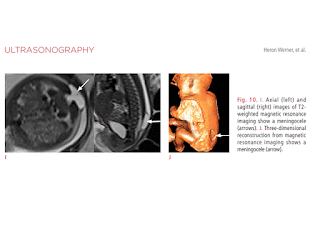Ultrasound in Chronic Liver
Disease, a Review
J. F. Gerstenmaier and R.
N. Gibson
Insights Imaging. 2014 Aug; 5(4):
441–455.
Published online 2014 May 24. doi: 10.1007/s13244-014-0336-2
Abstract
Background
With the high
prevalence of diffuse liver disease there is a strong clinical need for
noninvasive detection and grading of fibrosis and steatosis as well as
detection of complications.
Methods
B-mode ultrasound
supplemented by portal system Doppler and contrast-enhanced ultrasound are the
principal techniques in the assessment of liver parenchyma and portal venous
hypertension and in hepatocellular carcinoma surveillance.
Results
Fibrosis can be detected
and staged with reasonable accuracy using Transient Elastography and Acoustic
Radiation Force Imaging. Newer elastography techniques are emerging that are
undergoing validation and may further improve accuracy. Ultrasound grading of
hepatic steatosis
currently is
predominantly qualitative.
Conclusion
A summary of methods
including B-mode, Doppler, contrast-enhanced ultrasound and various elastography techniques,
and their current performance in assessing the liver, is provided.
Teaching Points
• Diffuse liver disease
is becoming more prevalent and there is a strong clinical need for noninvasive
detection.
• Portal hypertension
can be best diagnosed by demonstrating portosystemic collateral venous flow.
• B-mode US is the
principal US technique supplemented by portal system Doppler.
• B-mode US is relied
upon in HCC surveillance, and CEUS is useful in the evaluation of possible HCC.
• Fibrosis can be
detected and staged with reasonable accuracy using TE and ARFI.
• US detection of
steatosis is currently reasonably accurate but grading of severity is of
limited accuracy.
Future perspective
The increasing
prevalence of chronic liver disease, including fatty liver disease, together
with the need to minimise invasive liver biopsies will continue to provide
substantial drive for ultrasound research and development.
Conventional B-mode
ultrasound =
+ Quantification of echointensity in the
diagnosis of fatty liver disease is an area of recent interest. Standardisation
of technique and interobserver eproducibility will need to be addressed.
+ Quantitative
and semi-quantitative assessment of echotexture in the diagnosis of fibrosis
and fatty liver disease is being developed
Doppler ultrasound =
The role of Doppler ultrasound in chronic
liver disease is likely to remain principally in the diagnosis of portal venous
hypertension
Contrast-enhanced
ultrasound =
Kupffer-phase contrast agents can be used in
the grading of fibrosis as well as in the detection of focal lesions,and it is
hoped that these agents will become more widely available.
Elastography
More widespread use of the two most
extensively validated and established techniques of TE and ARFI is expected, and
further shear wave elastography techniques are likely to become more widely
adopted and evaluated.





















